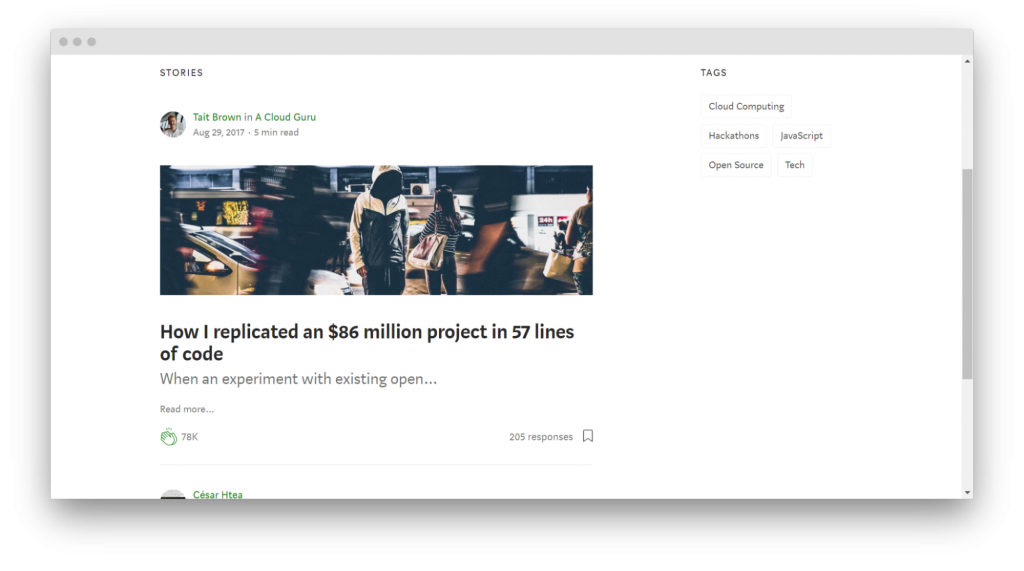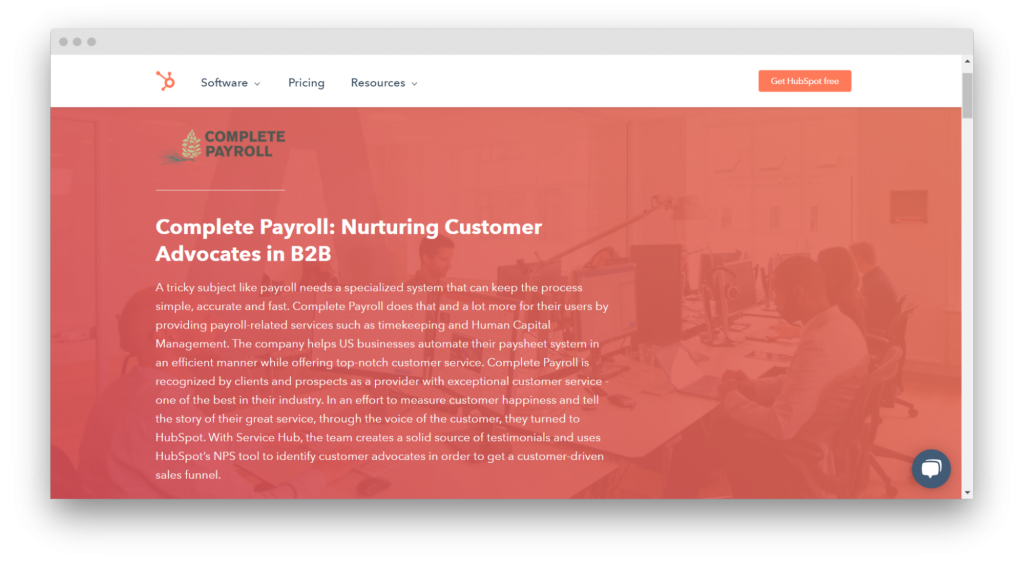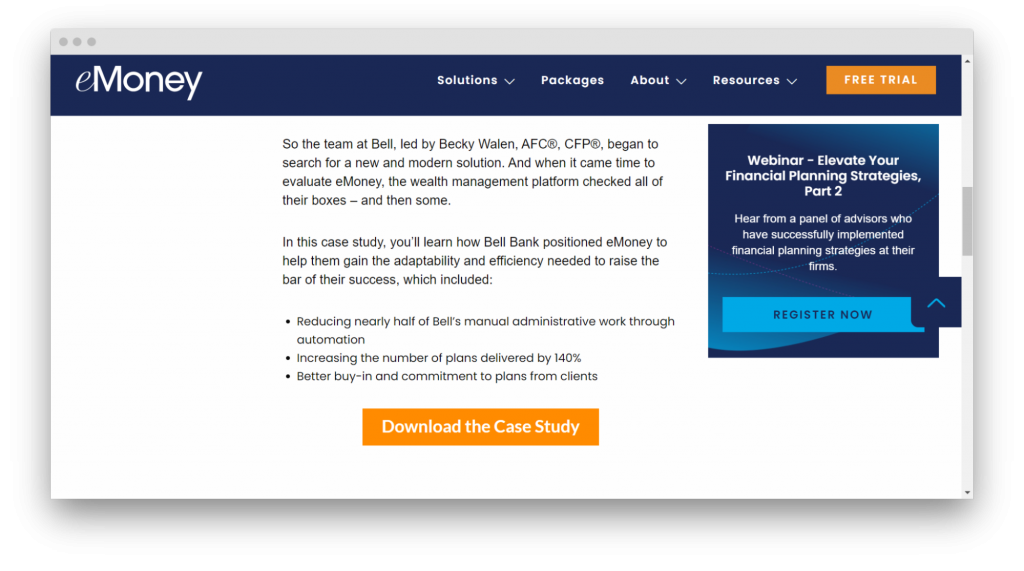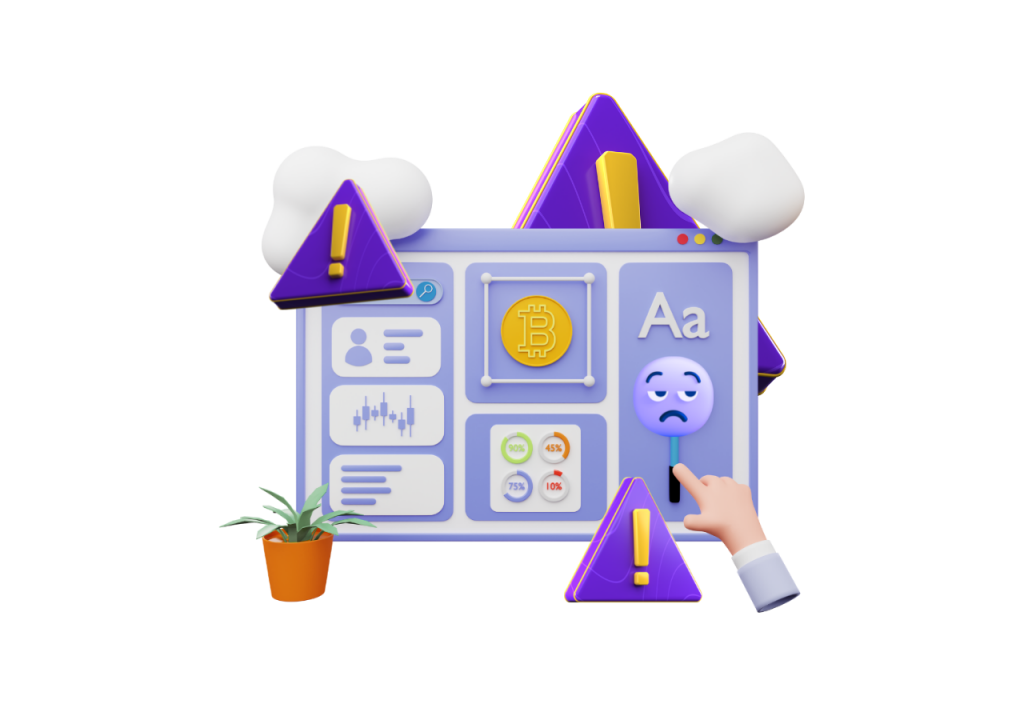Table of Contents
Talking about a company’s experience in solving specific practical problems is the best way to advertise. Not to mention, you can take advantage of the power of stories and turn them into a powerful, convincing business tool for potential buyers. We are talking about writing a case study. Contenteam shares how to make a case study and show you some great examples.
What Is a Case Study?
A case study is a deep and thorough analysis of a specific real-life situation.
In the business context, we can define a case study as a content format that demonstrates the experience of solving problems of a client. It is structured based on the principles of storytelling: there is a protagonist that is in conflict with an enemy – a problem. While trying to solve it, the protagonist finds someone who helps them – a company or a product. Together, they defeat the enemy and become better.
Case studies are created for the bottom stages of the sales funnel. They usually generate less traffic than optimized blog posts but are far more effective at convincing potential customers. In fact, if a potential customer sees evidence of you successfully solving a similar problem, they will be closer to making their choice in your favor.
Statistics show:
-
Case studies are the third most popular content format among B2B marketers, with 68% of specialists using it in their strategy.
-
66% of B2B marketers consider case studies to be “very effective” in attracting leads and increasing sales; 32% call it “quite effective.”
-
We asked the member of our telegram channel which content formats they prefer for IT promotion. Case studies made second place after blog articles, with 19% of respondents in favor of them.
As you can see, many companies already rely on case studies for a winning strategy.
Who Needs To Write Case Studies
If your business solves consumer problems, and the project results can be qualitatively and quantitatively assessed, it is worth adding case studies to your promotion strategy.
But it can also be a waste of time for other companies – those that provide standardized services or sell a simple product.
The main value of this content format is a conflict, a complex, interesting situation. The hero must overcome an obstacle to reach their goal. Otherwise, no one would read the story.
For example, the process of implementing an IT solution for a client’s company is case-worthy, whereas a usual site audit is not.
Important note: press releases, promotional materials, and ads are not case studies. The goal of a case study is not to sell but to demonstrate your abilities through real projects. Anything that you state in the material must be objective and supported by data.
Challenges of Writing Case Studies
Case studies generate hot leads and build up a business’s reputation. However, many companies have their hesitations about this content format, and here are the main reasons why:
- There is nothing to talk about. This is probably the most common problem. You might not have big wins yet, but even small achievements can provide a blueprint for a useful case study. After all, you can write an anti-case study and help potential clients avoid the same mistakes.
- Clients don’t want to collaborate. If you’re held back from writing about your achievements by an NDA, try to negotiate. Perhaps you’ll be able to write a non-specific case without mentioning the brand and using their data.
- Competitors will steal your ideas. Case studies can become the basis of entire learning systems because this is where companies share effective strategies. However, you shouldn’t worry that your experience will help competitors get ahead of you. You have different work processes, teams, and tasks. Whatever has worked in your case may not necessarily help a similar project.
- You need an expert. Case study research is not the task for an average copywriter. Firstly, the format takes a lot of time and preparation: conducting interviews, collecting data, etc. Secondly, the writer must understand the subject matter and what the client’s business is all about. If you don’t have someone like that on your team, consider working with an agency.
These challenges can be handled. Follow the steps below to make sure you don’t miss out on anything and create truly effective content.
How To Do a Case Study With Prominent Results
Here is the best strategy to create the case study for evergreen lead generation.
Goals
As with any other marketing activity, you need to start with setting the goals. In terms of KPIs, it’s better to focus on the number of leads and sales growth rather than traffic and reach. A side note: the average conversion rate for organic search is 5%, for paid search – 3.6%, and for social media – 1.9%. The metrics will depend on the type of promotion you choose.
Specify how much time and resources and how many employees it will take to prepare the material, and how you plan to promote it. Coordinate the plan with management.
When the task is done, you will be able to objectively assess how effectively the content will perform.
Topic and Format
The goals are set. Now, you can move on to choosing the topic and the project. Focus on striking a balance: the story should be interesting and also relevant to potential customers. It’s not wise to choose a rare problem that will generate no response. The story can involve different types of business, circumstances, methods, and solutions, but the general conflict should be familiar to most people.
Good topics to cover:
● cost reduction
● turning a profit
● increasing in the number of leads
● profit growth
● improving sales close rates
● entering a new market
● improving efficiency and reducing environmental impact
● optimization to meet legal requirements
At the initial stages of writing a case study, choose the format for it. Your options are:
● text
● presentation
● PDF file
● web page
● video
● infographics
● podcast
Client
The topic is clear. Now, you need to choose a suitable client to write about. You can focus on the following categories:
Product Knowledge
It’s better to write about a client who is familiar with your product. It means they use it effectively and to its full potential.
Significant Increase in The Main Metrics
Customers with satisfactory results are more likely to cooperate, and their stories will make for better cases, drawing the attention of the target audience.
Popular Brands
If your client is well-known in the industry, you will earn trust and credibility as a bonus to generating leads.
Dissatisfied Customers of Your Competitors
You can highlight your benefits by telling how you work with such requests.
Industry
Try to choose interesting projects in those industries and fields that you often work with. This will strengthen your expertise.
After that, find the customer’s contact information and proceed to the next step.
Client’s approval
Make sure the client is willing to collaborate. Describe what you need from them and what they will receive in return. You can write a letter, make a call or reach out on a messenger.
Here is how you can tell a client that you are conducting a case study:
Hello [customer name]!
Our team is working on a case study where we would like to tell the story of [company name]. Are you interested in working on it together?
Here’s the type of data we need:
● high-resolution logo
● photos of team members, office, production site – stories with images attract more traffic
● figures before and after
During the process, we will:
● interview [team member]
● write a case study based on the interview
● ask additional questions if needed
● send you a draft for approval
● make edits, publish the case study, and start promoting it
This will take about a month.
Please let me know if this format is suitable for you.
Kind regards,
[author of the letter]
At the point when you’re just discussing cooperation, it will still be useful to mention the benefits for the client. For example:
- Expanding the brand reach. You will mention the name of the company, briefly describe the project. This will increase awareness and even attract the attention of potential customers.
- Building a personal brand for employees. You will use quotes from team members, which will strengthen their expert status and boost recognition.
- A discount on a product or service. Motivate the client to spend their time by making an offer on special terms.
- External links. You will add an active link to the client’s website. Since you are a reputable resource, it will improve their rankings.
These arguments should convince the client and make the discussion stage easier.
Interview With the Client and Data Collection
Approval received, moving on to the interview. It can be carried out in any format that’s convenient to both parties: phone, video, email, messenger. You need to discover answers to the following questions:
- What problems did you face before using our product/service?
- Why did you choose our product/service? Have you considered offers by competitors?
- How did our product/service solve your problem?
- What business goals do you set?
- Are you ready to share the evidence about your success?
Here are questions for the client’s profile:
● What industry do you work in?
● How long have you been using our product/service?
● What does your workflow look like?
● How many people are on your team?
It may be enough to only cover the basics for a small case. But if you are planning to write a detailed study, you will need more details.
Storytelling
Data that you collect is the backbone of a future story. Now, you need to arrange it following the best storytelling traditions. “The Hero’s Journey” is the preferred template for a case study. What does he look like?
The narrative consists of three acts:
● problem
● solution
● result
Remember that your customer is the protagonist of the story, not a product or service. You were just guiding them on their path to success.
Draw up a plan, assign the data for each act and proceed to the next step.
Structure
Everything is ready for the most important stage: writing the case study. Start telling the story step by step:
- Heading and subheading. Try to include a brief description of the client, problems, and solutions in this block. Great example: How Host Analytics Used LeadGnome To Increase Lead Quality By 80%. Bad example: LeadGnome Helps To Increase Lead Quality.
- Summary. Describe the case, list the main figures, and share conclusions in a few paragraphs.
- Customer. Who this case is about: industry, size of the company, its specifics.
- Problem or challenge. Describe the problem your client faced or what goals they set.
- Solution. How your product helped to solve the problem or achieve a certain result.
- Results. Figures, percentages, or before/after visuals.
- Plans. If the project is not finished, share what else you plan to do to achieve the best results.
- Call to action. Invite potential clients to contact you, subscribe to a newsletter, or read similar case studies.
The draft is not ready for the next step.
Approval
Contact the client again, show the material and, if necessary, make changes. It sounds simple, but the stage can take a while.
Design
It’s time to focus on the case study design. The choice will depend on the format, posting platform, and budget: a simple layout can be enough, but sometimes a case study requires infographics or even an animation video.
General rules:
- Ensure the scannability of the material: emphasize important things with lists, divide the text into small paragraphs, add subheadings.
- Visualize your data. To make sure the data is easy to understand, consider graphics, animation, tables, infographics, interactive elements – any format that works for you.
- Simplify. Give examples, add comparisons that the readers will get, make videos.
- Place accents. Use contrasting colors to highlight key findings, important quotes.
- Brand. Add a logo, use brand colors and fonts.
It is better to get the client to approve the material again. They might ask you to change the font or resize an employee’s photo near the quote.
Approved? Then let’s roll!
Where To Publish and How To Promote Case Studies
Most of the work is done. All that’s left is to share your experience with potential clients. Let’s start with the publication.
Platforms for publishing a case study:
- Company website. It’s already the place where you bring the audience. Case studies will help them decide to make a purchase. The content can be publicly available or shared in exchange for contact information.
- Relevant niche websites. Publish the case study on a platform that is often visited by your target audience: a blog for entrepreneurs or Medium. This is a good option if your website still has little traffic, but you want to increase the reach. As a bonus, you also get an external link from a reputable source.
- Social media. There are two ways to approach it: post case studies directly on your account or on relevant groups (but don’t spam).
You published a case study and obtained the link. How to promote it? Here are some options:
● Run targeted ads on social media. Add users who have previously been interested in your website or group to your core audience.
● Set up contextual advertising. Check if the topic of your case study is popular in search.
● Conduct seed testing. Promote the publication in relevant communities, forums, Q&A platforms.
● Ask the client to talk about the material on their website.
● Share your experience with an expert. They might find it interesting and share it with their audience.
Follow these steps to write an effective case study and show it to as many potential customers as possible. But before you start, take a look at some examples of case study research papers and use them as inspiration for your own.
Best Case Study Examples
IBM released Watson AI to help businesses automate processes and improve efficiency. The brand talks about its success in the Customer stories section in a clear, easy-to-understand manner.
Here is one of the case studies – the results of the project with Korean Air. It has an intriguing headline, an overview of the problem, a description of what was done, impressive results, and a call to action.

The next example will inspire companies that have little experience to challenge themselves and create case studies practically out of nothing. This is what the Cloud Guru training platform did.
Cloud Guru’s employee shared a compelling story on Medium. In Australia, Victoria’s police staff was struggling to handle stolen car searches, so they commissioned the development of an automated monitoring system BlueNet, worth $86 million. The hero of this unusual case was able to create a free alternative, which impressed 78,000 readers. The call to action motivates readers to learn the technical skills to create projects of equal scale.

And here is a classic example of a case study from HubSpot. Description of the project, focus on the results, the client in the lead role, quotes, a call to action – they included all the important elements.

Here is one of the best case study design examples in a PDF format from eMoney. The story is divided into several blocks: “Company Profile,” “Problem,” “Solution,” “Results,” and a call to action.

Case studies are not always about a client’s story. You can talk about an internal experiment while promoting your product. For example, like Ahrefs. They created a detailed piece with screenshots, gifs, graphs, and even algorithms.

In short
A case study is a valuable content format that you shouldn’t neglect. It turns users into customers, demonstrates your expertise, and helps you promote your business.
How to conduct a case study:
- Set a goal and choose KPIs.
- Decide on a topic and format.
- Select a client.
- Share your intentions and get approval.
- Conduct interviews and collect data.
- Arrange the story using the template Problem -> Solution -> Result.
- Write a title, summary, client profile, problems and solutions, results you achieved, and any further plans for the project. Add a call to action.
- Send draft to the client for approval.
- Add design elements, create visual content.
You can publish the case study on your website, external sites, or social media. Promote it using targeted and contextual ads, placing links in relevant discussions, and collaborating with experts.
If you struggle with any of these stages, please contact Contetneam – we will be happy to help. Contenteam – we will be happy to help.












